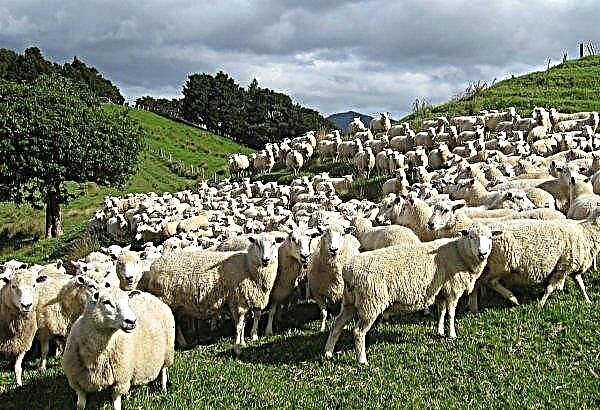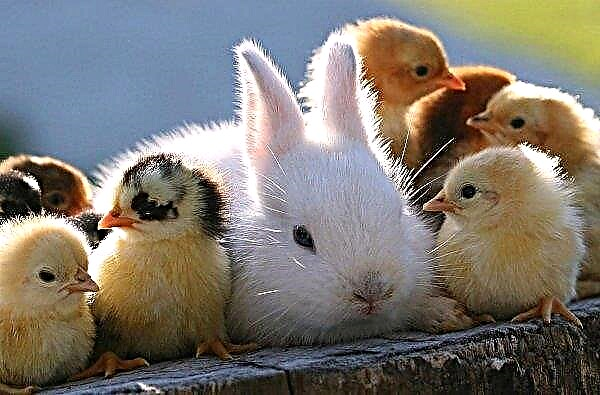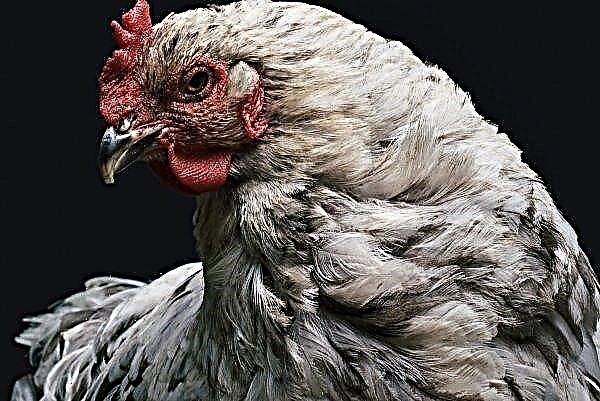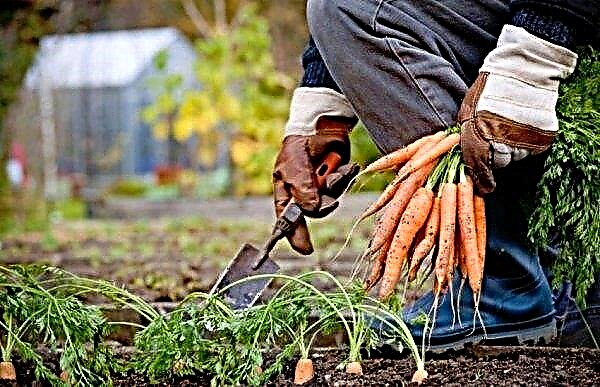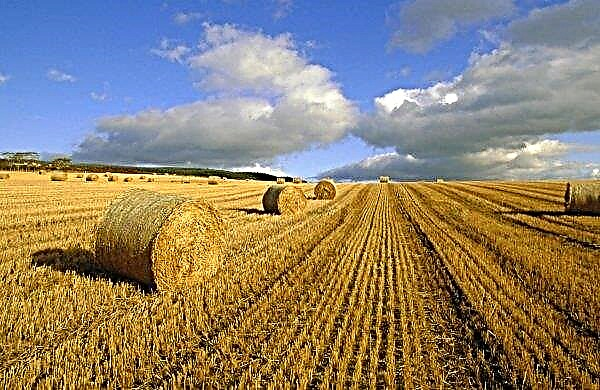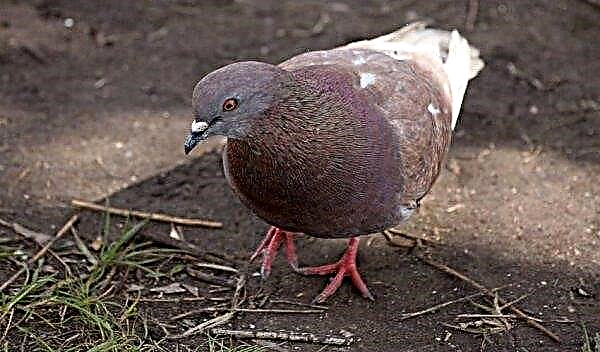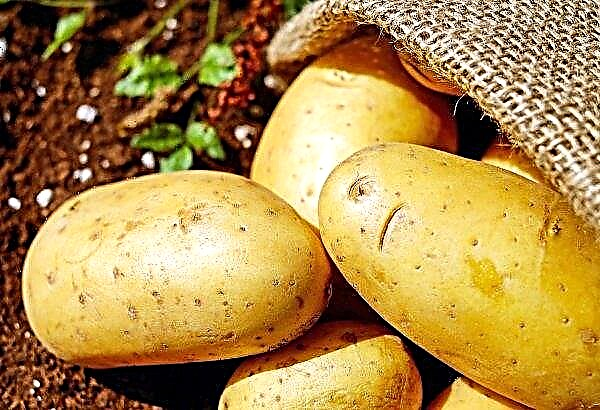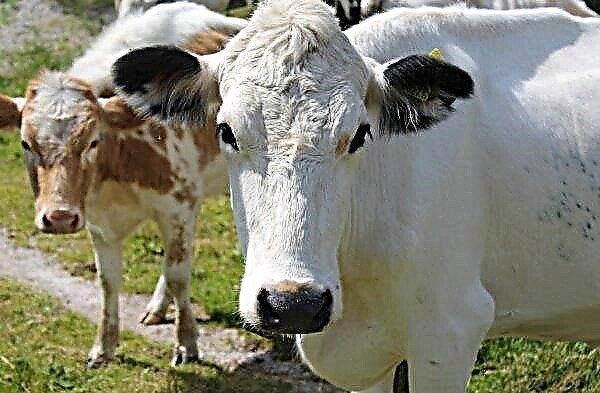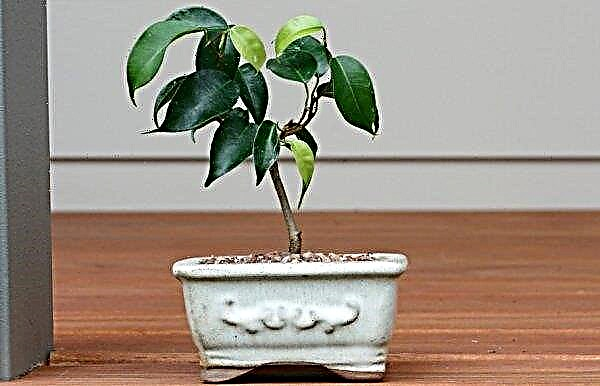Today, greenhouses are widespread in summer cottages - the idea of the possibility of obtaining crops all year round attracts many gardeners. Growing mushrooms in closed ground is not such a common area among vegetable growers.
However, although this procedure is not associated with a pleasant pastime, unlike going to the forest for them, getting more environmentally friendly mushrooms at any time of the year attracts more and more people. Consider the technology for growing mushrooms such as champignons in greenhouse conditions below.
Did you know? The mushrooms are 400 million years old, that is, they existed even before the advent of the dinosaurs.
The main advantages of growing champignons in a greenhouse
- The process of growing mushrooms in greenhouses and hotbeds has a lot of advantages, among which are especially distinguished:
- Environmental friendliness - it is known that mushrooms have a high absorbency, and therefore, can become a source of harmful substances and be toxic to the human body.
- Especially this probability increases when picking mushrooms near roads or in areas with low environmental performance. Based on these indicators, poisoning by mushrooms grown in greenhouse conditions is reduced to zero.
- Opportunity to open your own business - mushrooms are related to products for which demand is never reduced, and therefore can become quite significant replenishment of the home budget.
- Harvesting year-round - growing mushrooms in greenhouses makes it possible to harvest at any time, despite the current season.
- Minimum costs - money will be needed to purchase biomaterial and work on arranging a greenhouse. However, as practice shows, such expenses quickly pay off.

Recommended types of mushrooms for greenhouses
There are also the most popular mushrooms among farmers:
- oyster mushroom - takes first place, due to its high productivity and short reproductive cycle (the main competitors are winter mushrooms and ring mushroom);
- Champignon - More “capricious" mushrooms, requiring a complex technological process of soil preparation;
- White mushrooms, morels, shiatake - despite its popularity and fairly high prices, the cultivation of these mushrooms is not very difficult.
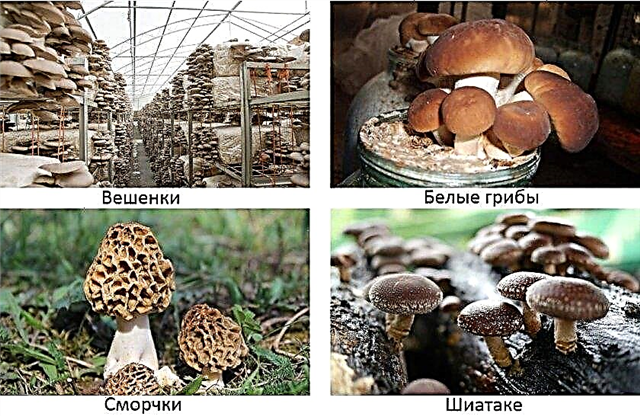
Dates of planting mycelium in a greenhouse
When determining the timing, it should be understood that there are no clear timelines. Both spring and winter planting are acceptable, both in autumn and summer - the main thing is that the temperature conditions are observed, preparatory work for the arrangement of the greenhouse is carried out and the soil is prepared.
Basic requirements for a greenhouse
When starting to choose a greenhouse, you should know that mushrooms are unpretentious crops, and their cultivation does not require special conditions. But it is worth considering that the rules of maintenance are somewhat modified, depending on the type of plant grown. So, for example, oyster mushrooms can grow in cellars and cellars, and champignons - in film greenhouses.
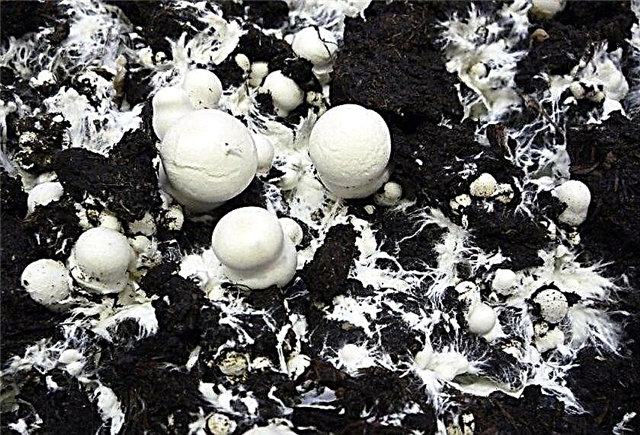
The main thing is not the type of the greenhouse itself, but the observance of the most important environmental parameters:
- Lighting - mushrooms do not tolerate direct sunlight, under the influence of which they dry up and die. Growing mushrooms in greenhouses, you should shade the walls with a grid or paint with chalk solution.
- Temperature and humidity - heat is contraindicated for mushrooms, because it is at low temperatures that the formation and intensive growth of new bodies occurs. As for humidity, its level should be high - about 90%.
- Ventilation - increases the comfort of mushroom growth and is achieved by ventilation, or by installing a special ventilation system.
Important! To increase and maintain the desired level of humidity, sawdust is placed on the floor of the greenhouse, capable of both absorbing moisture and giving it away if necessary.
Features of growing champignons at home
Champignons - a very popular product that is used everywhere in the preparation of various dishes. At the same time, this type of mushroom is perfect for growing by beginners, as they are unpretentious in care and do not require large financial investments for the acquisition of mycelium and supplies.
The whole process of cultivation of mushrooms originates from the selection of a place for growing, the acquisition of mycelium, the preparation of the substrate and the optimal conditions for the development of mycelium. At the same time, the quality of the compost requires special attention - its moisture level should not be higher than 70%, nitrogen indicators are in the range of 2–2.5%, and the acidity level of the substrate is not higher than 7.5 units.
Video: How to make money on mushrooms at home on an industrial scale
How to prepare mycelium
Preparation of mycelium for sowing consists of several main stages:
- Excerpt - since the mycelium is stored at a temperature of +2 ... + 4 ° С, but the process of its growth is practically stopped. So that after sowing in compost, the grains immediately begin to grow, boxes with mycelium can withstand 20-24 hours at room temperature in a clean room.
- Rejection - Before sowing, each bag of planting material should be carefully checked. If, during inspection, a sour smell is clearly felt, mold is detected, changes in color, or mechanical damage is visible on the package, the contents of the package are not used for seeding in compost.
 With prolonged storage, the mycelium, overgrowing, turns into a continuous dense mass. Before sowing, it should be shaken and the lumps carefully broken, without damaging the integrity of the bag and minimally injuring the grains.
With prolonged storage, the mycelium, overgrowing, turns into a continuous dense mass. Before sowing, it should be shaken and the lumps carefully broken, without damaging the integrity of the bag and minimally injuring the grains.
Planting mycelium
The first and most necessary condition for growing champignons is a properly prepared mushroom.
A substrate of 1 m² is prepared from the following components:
- 1/3 centner of straw or sawdust;
- leaves;
- winter wheat grain;
- tops (ideally, vegetable);
- cow or horse manure;
- 100-150 liters of water;
- 750 g urea;
- 700 g of superphosphate;
- 3 kg of gypsum;
- 700 g of chalk.
It is better to prepare and mix the substrate either in a well-ventilated area, using a respiratory mask, or outdoors (while avoiding contact with water or direct sunlight).

20–25 days before the intended mycelium planting, straw and other plant components are soaked in water for 24 hours. After that, a stack of substrate is prepared in layers: a layer of manure - several layers of straw and plant parts. Each layer is poured with chalk, gypsum and fertilizers, and is also actively wetted with water. The substrate is kept for the required period covered.
The next step is the landing process itself. For the volume of the prepared mixture, about 450 g of mycelium will be required. In the process of planting, a layer of soil is lifted and at a depth of 4-5 cm is planting material, the size of which does not exceed a tennis ball.
Each hole is located at a distance of 15–20 cm from the other. The most optimal arrangement is staggered. Mycelium in grains does not require a special planting pattern - it is simply evenly distributed over the entire surface of the nutrient mixture and covered with a layer of substrate.
Fertilization
Champignons, like other mushrooms, reproduce through spores that form on the plates under the hat. Also, one of the method of reproduction is the vegetative path (division of mycelium). The cells of a piece of a mushroom cap placed in a sterile medium multiply at great speed, forming a mycelium (tissue method of reproduction).
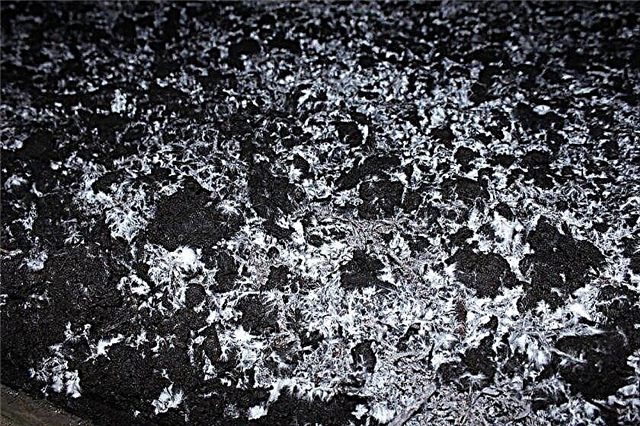
Care Rules
Care procedures for mushrooms of this species do not require investment of great effort or time. By following simple recommendations, you can easily achieve a good harvest.
Temperature mode
Air temperature is the main indicator of the future harvest, since in conditions of elevated temperatures, the growth and development of mushrooms stops. The optimum temperature regime for the room is +14 ... + 16 ° C. Also, after the appearance of the first mushrooms, you should ventilate the room several times a day or use a ventilation system that can reduce the concentration of carbon dioxide.
How to water
Another important factor is the timely and regular watering of the soil, as well as maintaining the required level of humidity in the room. Watering the substrate begins in 8-10 days, after preparation. For this purpose, you can use a small watering can with a water supply in the form of small drops.

You should be very careful about this procedure, since water, penetrating deeper than the cover layer of the substrate (into compost) can cause decay of the mycelium. The humidity level in the room should be within 70%. Such results can be easily achieved by installing open containers around the perimeter, filled with water.
How to feed
Most often, the prepared or purchased substrate does not contain the entire complex of additives necessary for the growth and development of mushrooms. That is why, to enrich the mixture and accelerate the growth of mycelium, special fertilizers are used.
Starting to feed, you should consider some points:
- the fertilizer procedure should be carried out in conditions of increased sanitation and hygiene;
- fertilizer must be distributed as evenly as possible throughout the substrate;
- the introduction of additives with a high concentration should be carried out very carefully - a large amount can dramatically reduce the level of productivity.
Did you know? The largest mushroom was found in the United States in the mid 80s–x years. Its weight was 140 kg and its diameter — more than 2 meters
There are several types of fertilizers that may be needed in the process of growing mushrooms:
- gypsum - positively affects the structure of the substrate and is necessary for the processes of fungal metabolism;
- urea - increases the speed of decomposition of compost;
- potassium chloride - takes an active part in growth processes;
- calcium nitrate - participates in accelerating the processes of assimilation of nitrogen;
- sulfur - an integral element of the cell structure;
- hydrogen peroxide - prevents the infection of fungi.
Video: Growing champignons
Harvesting and storage
The first champignon crop can be removed 30–35 days after sowing the mycelium. At the same time, the period of active growth lasts 3-4 days. The fruiting period is 2-3 months and differs in wave character - during the fruiting period, you can collect about 15 kg from 1 m², and then there is a lull. After, active fruiting resumes.
The first few waves have the greatest number of crops (there can be about 7 in total). The level of maturity of the fungus is determined by the state of its film, which connects the leg and hat of the fetus - full maturity is characterized by its darkening.

The main question: how to collect mushrooms? The collection is carried out without a knife - the mushrooms are carefully twisted out of the substrate, trying not to damage the rudiments of the fruiting bodies and mycelium. After harvesting, the compost is removed (it can be used as fertilizer on beds and flower beds), and the room itself is treated with a 4% solution of bleach.
It is best to store champignons in the refrigerator, unwashed, at a temperature of +4 ... + 6 ° C. To reduce moisture loss, it is best to use lockable containers or a plastic bag (in this case, once every 3 days it should be opened for ventilation).
In general, the procedure for growing mushrooms does not require special knowledge and does not cause much trouble, and the results will please any gardener. After reading a little information, any summer resident, professional or beginner, can easily get a rich harvest and the opportunity to enjoy mushrooms throughout the year.



